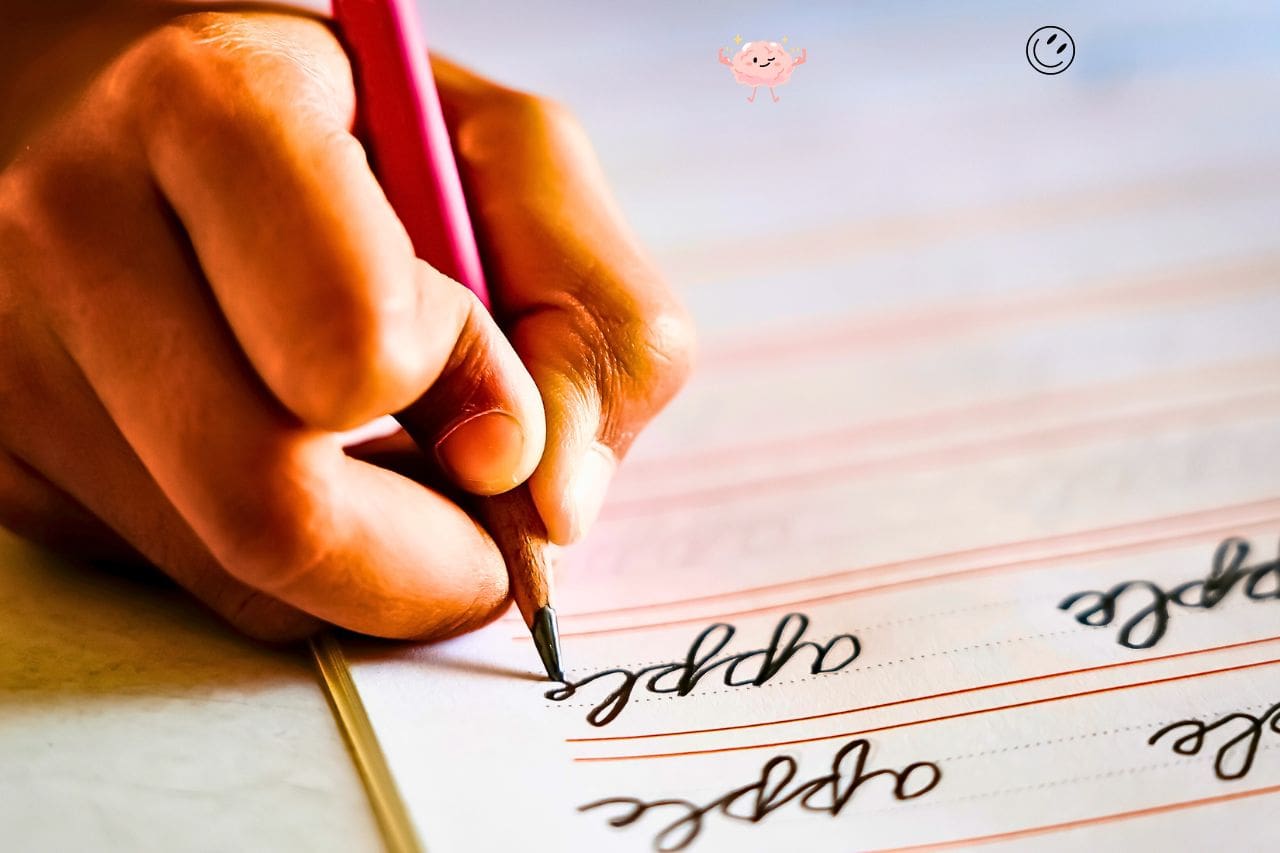

Cursive writing, often viewed as an antiquated skill in the digital age, is proving to be far more than just a method of recording words. Recent studies reveal that this elegant form of handwriting can significantly enhance brain function, improve fine motor skills, and even foster creativity. From young children to adults, the act of writing in cursive has profound implications for cognitive development and overall brain health.
Cursive may seem like just a different way of writing, but studies have found that it activates different neurological pathways than typing or manuscript writing. This unique activation can lead to fewer errors when information is presented to the left hemisphere of the brain.
Writing in cursive promotes an understanding of complete words better than separate letters. Humans think structurally, not phonetically, and cursive helps reinforce that. This continuous fashion of writing words enhances brain connectivity, making it easier to process and understand information.
The act of writing by hand, especially in cursive, engages the brain in ways typing can’t match. This engagement is crucial for memory retention and learning. Researchers are learning that handwriting, particularly cursive, primes the brain for learning by establishing neuronal oscillation patterns.
The latest (2020) research on the brain benefits of cursive handwriting adds to a growing body of evidence and neuroscience-based research on the importance of learning to write by hand.
Handwriting, particularly cursive writing, plays a crucial role in the development of fine motor skills. This practice not only enhances dexterity but also stimulates specific brain areas, leading to improved cognitive functions.
Writing by hand improves the fine motor skills of young adults and grows particular brain areas. Such oscillatory neuronal activity stimulated by writing by hand leads to improved cursive handwriting and the expression that can provide. This art of writing will flow into the pen (or digital pen) and allow both young children and adults to fully express their ideas.
Writing by hand can be more beneficial for some children than others. Some kids maybe have fine motor issues, so handwriting will be a challenge for them. On the other hand, there’s some evidence that handwriting, especially cursive handwriting, works especially well for students with dyslexia.
Another study from Oxford University found that students who learned to write by hand did better on standardized exams compared with those who learned to type. All this means that the art of writing by hand is super critical and we must not skip handwriting training altogether at a young age. It is clear that the fine motor skills developed have long term benefits.
The art of cursive handwriting with its requirement for fine motor skills is part of early handwriting training. Writing by hand also helps in brain activity and visually presented words provide a user with a ‘visual’ experience of their handwriting and drawing.
Cursive handwriting is not just functional; it’s also a form of creative expression. The ability to embellish and connect letters in a fluid, stylish manner allows for a flow of thought as well as a flow of words. Every time you put pen to paper, you can get creative from curlicues to calligraphy.
Writing in cursive promotes an understanding of complete words better than separate letters. Humans think structurally, not phonetically, and cursive helps reinforce that. This continuous fashion of writing words enhances the expressive potential of the writer.
When one becomes proficient in cursive, the barrier between thought and action is minimal. By not having to slow down with block printing, writers can put virtually all of their focus on the content of their work. This is in contrast to non-cursive writing, where the interruption can hinder the creative process.
The latest (2020) study on the importance of cursive handwriting suggests that from an early age, children who are encouraged to augment time spent using a keyboard with writing by hand or drawing establish neuronal oscillation patterns that prime the brain for learning. This early engagement with cursive writing can set a strong foundation for cognitive development.
Unfortunately, cursive handwriting seems to be a bit of a lost art these days, with the advent of the keyboard and touch screens. However, introducing cursive handwriting instruction and specific lessons to young children can significantly prime their brains for learning. This includes activities like coloring, tracing, and other pre-printing exercises.
Writing by hand can be more beneficial for some children than others. For instance, there’s some evidence that handwriting, especially cursive handwriting, works especially well for students with dyslexia. This practice not only aids in fine motor skills but also contributes to long-term cognitive benefits, making it a valuable tool in early childhood education.
The study by James & Engelhardt (2012) highlights the importance of handwriting experience on the development of the literate brain. Their research found that handwriting activates more complex brain connectivity than typing, which is beneficial for learning and memory. The slow process of tracing out letters and words gives individuals more time to process the material and learn.
A recent study published in 2020 shows that there is a fundamental difference in brain organization for handwriting as opposed to typing. High-density EEGs were used to measure brain activity, demonstrating the unique cognitive engagement of handwriting. The results advocate for maintaining handwriting instruction in schools alongside digital literacy.
Future research should focus on understanding the long-term cognitive benefits of handwriting versus typing. This includes exploring how handwriting can influence brain areas involved in motor and visual processing, and how these skills are the basis for the development of more complex language abilities.
Handwriting is not just a means of communication but also a powerful tool for maintaining cognitive health. Writing is good for keeping one’s gray matter sharp and may even influence how we think, as in “more positively,” studies show. Apparently, sequential hand movements, like those used in handwriting, activate large regions of the brain responsible for thinking, language, healing, and working memory.
Handwriting, whether in cursive on a touchscreen or traditional pen and paper, activated extensive brain regions, vital for memory and learning. These findings highlight the importance of balancing traditional handwriting instruction with digital literacy in educational settings.
Handwriting lessons for kids are crucial. Despite the need for more studies to determine the optimal learning strategy, experts say that handwriting shouldn’t be left behind in the digital age. “[Schools] need to bring in more writing into curriculum design,” Balasubramaniam says.
Another study from Oxford University found that students who learned to write by hand did better on standardized exams compared with those who learned to type. All this means that the art of writing by hand is super critical and we must not skip handwriting training altogether at a young age. It is clear that the fine motor skills developed have long term benefits.
In conclusion, the practice of cursive handwriting offers a multitude of cognitive benefits that extend beyond mere writing skills. From enhancing fine motor skills and fostering brain connectivity to stimulating creativity and improving memory, the act of writing by hand engages the brain in ways that typing simply cannot. The latest research underscores the importance of incorporating cursive handwriting into educational curricula to support functional brain development in young children. As we continue to navigate an increasingly digital world, it is crucial to recognize and preserve the unique advantages that cursive handwriting provides. By doing so, we ensure that future generations can fully harness the cognitive and expressive potential that this timeless skill offers.
Cursive writing activates different neurological pathways than typing or manuscript writing. This is because the sequential hand movements required to form cursive letters engage large regions of the brain responsible for thinking, language, and working memory.
Writing by hand improves the fine motor skills of young adults and stimulates the growth of specific brain areas. These activities lead to improved cursive handwriting and a greater ability to express ideas.
James & Engelhardt (2012) used MRI neuroimaging to investigate the effects of handwriting on functional brain development in young children. They found that handwriting increases neural activity in certain sections of the brain, much like meditation.
The act of writing by hand, especially in cursive, unleashes creativity that is not easily accessed through other means. It increases neural activity in certain sections of the brain, similar to the effects observed during meditation.
There is no significant difference between cursive and non-cursive handwriting in terms of brain function. However, cursive handwriting has been shown to improve fine motor skills and spatial awareness and can be more expressive than non-cursive handwriting.
Encouraging children to write by hand from an early age helps establish neuronal oscillation patterns that prime the brain for learning. This leads to long-term cognitive benefits, including improved memory and learning abilities.
For more life-changing articles Click here
selfstalker.com

Monday - Thursday 7 AM - 5 PM PST
admin@selfstalker.com support@selfstalker.com